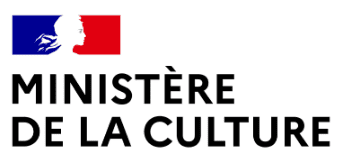Continuing his research into European canon, its concepts, history and grey areas, (Daphne and Thomas, FID 2019), Assaf Gruber is our tour guide. Rude Witness – after Transient Witness– takes us in a van stuffed with artworks, which we learn have been stolen from the famous Green Vault of the Dresden State Art Collections (SKD), back to this same museum, seen here clearly as a domestic space. In this film, which cultivates a dry sense of humour and borrows from the codes of detective movies, we follow a very strange thief flanked by his imposing dog, who’s transformed from a museum visitor into the master of his territory. Poking fun at the mocking gaze of the oriental-inspired caryatids welcoming visitors to the building, Gruber multiplies the slip-ups to recast actions that Art History sometimes has trouble distinguishing: collecting and stealing. The shifts challenge the notions of heritage, attribution, rights and loss that shape the history of art’s dominant narratives, with the looting off-screen. What has been repressed is back in this story of putting things in a box (in showcases). The museum’s artefacts and areas, stripped of the conventional museum distinction of seeing and doing, are jestingly reactivated. Moving from one thief to the other, from the dead to the living, to the aptly named dog Präsens (Present Tense in Geman), the film tells a story of interlocking devouring, mirroring Chad Gadya, the nursery rhyme sung in Italian, where each creature, from the mouse to the cat, from the cat to the dog and so on, ends up being defeated in the following verse.
(Nicolas Feodoroff)
- CNAP Award | Flash Competition
- 2022
-
 CNAP Award
CNAP Award
-
 Flash Competition
Flash Competition
- 2022
RUDE WITNESS
Assaf Gruber
Interview with Assaf Gruber
Continuing your research and investigations about western art, its concepts, its history and its grey areas, as in Daphne and Thomas (FID 2019). You opt with this film for a kind of detective fiction. Why this way?
My investigation is not about western art. In Daphne and Thomas, the hidden colonial ambition belonged to East German scientists who traveled to Cuba in order to uproot 6 tons of coral reef to be exhibited later in the Natural Museum of Berlin. This story was framed by the sad reality in the German Democratic Republic (East Germany) when religious people were refused participation in the cultural sector. The investigation is dedicated to how the political orientation of cultural institutions metamorphose due to political, global and local, changes. This theme deserves investigation and self-reflection West and East, North and South.
The theft of the gems from the Dresden State Art Collections (SKD) that occurred in 2019, is considered to be one of the biggest art heists in history. At the time we shot the film their value could not be estimated; they were often described in the media as priceless. Today their value is 135 million euros and keeps on changing each day.
All these changes in value of national art objects due to a crime shapes both the plot and the concept of the film.
For this film, your investigation focuses on a museum of the Green Vault part of the State Art Collection of Dresden (SKD) in Dresden. Why the SKD precisely?
The Green Vault is only one of the fifteen historical venues of the SKD which is the national art collection of the State of Saxony. The Green Vault itself is the first presentation in history of a royal collection opened to the wide public, which makes it one of Europe’s oldest museums.
Dresden charged 20th and 21st history with other complexities: it was one of the most bombed cities during WWII, it’s postwar dire period as part of the eastern bloc, and more recently, the extreme right-wing movement of Pegida grew in Dresden.
Many socio-cultural clashes spawned in this city that one of its main economic sources and jobs provider remains the very same SKD, hence historical cultural institution. The heist of 2019 embarked on a new trauma for the region. The Mayor’s statement, reported in the radio, actually did happen that morning, when he said: “Today not only the priceless Gems were stolen, today the Saxon identity was stolen!”.
Your casting is quite minimalist and partly unexpected, like the dog with the ironic name. Can you tell us more about these choices?
The notion of time is important to answer this question as the order of the scenes in the film is deliberately not chronological: Are the objects in the car in the opening scene making their way to the Museum or leaving it?
I named the Dog Präsens (which means present tense in German) because in the film, the violent past is literally set in the stone sculptures or the precious stolen gems. It is also quite clear that something bad is about to happen in the near future, after all, someone must be blamed for the stolen Saxon identity…
It is only the present that is ungraspable, like a running dog that keeps on slipping through our fingers.
You insist on sculptures with gestures accentuated by your camera. How did you make this choice? Is it related to the scene you are showing?
All the statues and sculptures in the film were “cast” after quite enjoyable but long research, from the replica of The Abduction of Persephone to the problematic Moor with Emerald Cluster. Each one has an overwhelming long history and here I’ll tell you only one: The Asian statues in the courtyard are placed inside the Japanese Palace which is part of the SKD.
When I first came there, I noticed that those statues’ faces are not at all Japanese though they are part of a Japanese donation made for the prince Augustus the Strong in the 18th century… I asked Japanese art historians who felt disoriented by what they saw. They said that those statues are totally distorted: the eyes could not be Japanese nor Chinese, the ears could be Vietnamese demons, their breasts were encodable. Also, Chinese historians felt troubled by the images. The only thing they were all positive of is that their strong muscled arms are roman. Those statues were made in the Rococo period by German artisans. According to their imagination, this is how Japanese statues should look like. This awkward history “charged” all of us (actors and team) with a strange set of emotions that came out naturally in the film.
Here, as in your previous films, the body, its representation and its presence seem central. Is it the best critical space to question traditional western museography?
It is clear to all of us that museums are indoctrination instruments of the government, and therefore they are colonial institutions. When I imagine them empty from humans and myself running naked inside, I can understand this in the most profound way and this is how I want to share it with the audience.
During the film, we hear Chad Gadya, a playful traditional rhyme from the Aramaic or Hebrew tradition. Why did you choose to have it sung in Italian ?
Even though the film has no dialogue, it is bilingual: The journalist voice from the radio (which is real) depicts in detail not only the heist but also (objectively and unwillingly) the colonial history of the museum (hence the crime scene). Her monologue inspires the main character to sing Chad Gadya: Facts in German verse a folklore children’s story in Italian. Chad Gadya (Chad in Aramaic means one or the verb for asking a riddle) is traditionally sung at the end of the Jewish Passover. Some theologists claim that it is included at the end of the Passover ceremony only to keep children awake due to it’s fairytale-like enigmatic plot… Chad Gadya comes from the family of cumulative songs, (i.e “Old MacDonald Had a Farm”), meaning that in each progressive verse a new figure is added to the list of elements from the previous verse. The story begins with “One little goat who is then eaten by a Cat, and then the Cat is bitten by a Dog, then the Dog is beaten by a Stick, then the Stick is burned in a Fire, and so on, until the Angel of Death is wiped out by God.
Above all, it is a parable about violence and historiography. Cumulative songs as such exist probably in any culture, and there are proofs that Chad Gadya originated in a Medieval German nursery rhyme, which itself likely came from an earlier French version. The song became a hit in Italy in 76’ pop/folk with Angelo Branduardi’s version of it. However, the authorship of the song remained vague… The main trope of Rude Witness is that each theft is also a gift, and each donation is also a loss: absurd experiences that only such a brilliant folklore song can convey.
Interview by Nicolas Feodoroff
-
 CNAP Award
CNAP Award
-
 Flash Competition
Flash Competition
Technical sheet
Germany / 2022 / Colour / 17’
Original version : italian, german
Subtitles : english
Script : Assaf Gruber
Photography : Frank Meyer
Editing : Janina Herhoffer, Dane Komljen, Assaf Gruber
Music : Yennu Ariendra, J Mo’ong Santosa Pribadi
Sound : Jochen Jezussek
Casting : Michele Andrei, Sabine Wackernagel
Production : Caroline Kirberg (Kirberg Motors), Assaf Gruber.
Filmography :
Transient Witness, 2021
Daphne and Thomas, 2019
The Conspicuous Parts, 2018.
The Calling, 2017
The Right, 2016.
- Autres films / CNAP Award, Flash Competition






